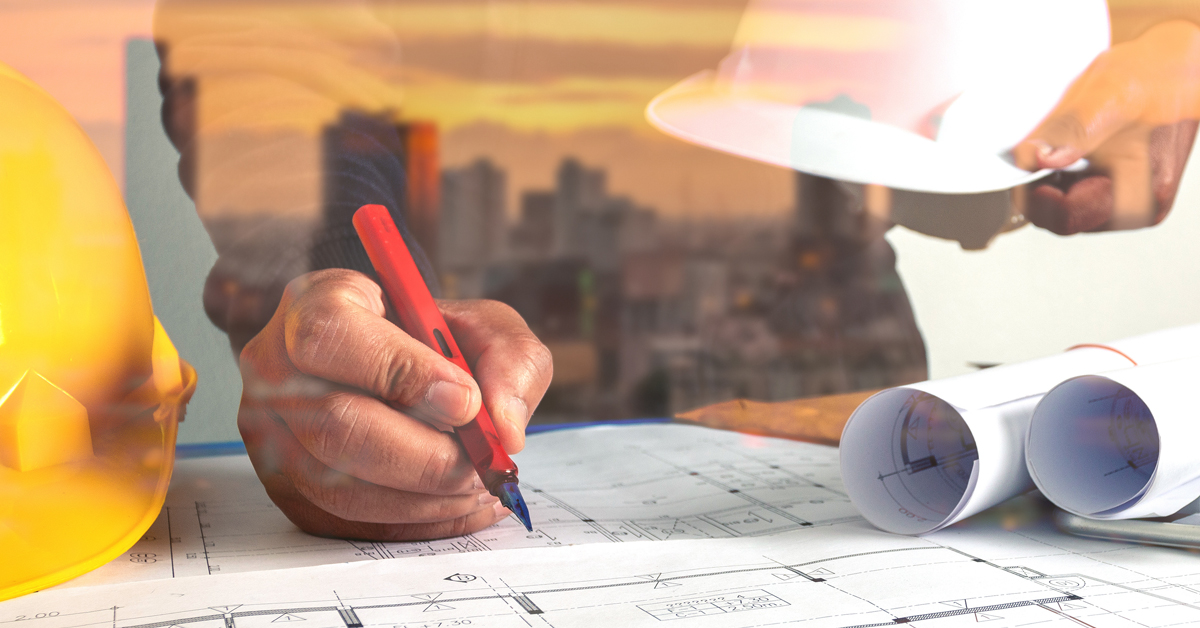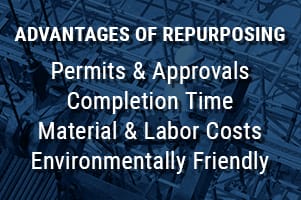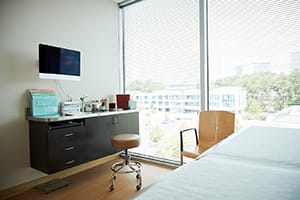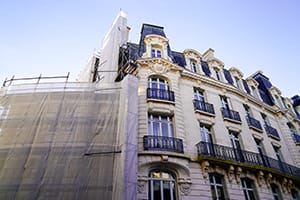
As the office market continues to struggle and reasonably priced multifamily housing remains in short supply nationally and throughout Southern California, the obvious answer would appear to be simple: Convert the office buildings to apartments. However, as we documented in a previous post, there are numerous challenges to converting office products to multifamily. Only about a quarter of existing stock can even be considered for conversion due to building layout issues. Although local, state, and federal programs can provide expertise and tax relief, the cost of converting most office buildings into housing does not pencil out.
So, what can be done with underperforming office buildings?
Fortunately for some building owners (or opportunistic investors), other possibilities for building conversions exist, including transformation into lab space, hospitality, and medical office uses. A recent survey by the U.S. Chamber of Commerce found that industry professionals (architects, builders, building owners/property managers) anticipate that of the existing office space that will be converted 30% will become retail space, 23% will become hotel/hospitality space, 22% will become multifamily property, and 21% will be entertainment space. The trend is already gaining traction, as a majority of architects and builders reported an increased number of office space conversion requests in the past year, with the majority occurring in large and medium metropolitan areas.
Advantages of Repurposing Office Buildings
For owners and investors, converting office buildings has several advantages over new ground-up development, particularly in markets like Southern California, where developable land is expensive and scarce. A report by NAIOP last year on the risks and opportunities associated with office building conversions listed these advantages:
 Permits and other approvals are easier to obtain than for new construction. An office building’s current zoning usually permits life science and medical office uses. Conversion of an existing building to multifamily use in a commercial area will usually encounter less community opposition than new construction in a residential area.
Permits and other approvals are easier to obtain than for new construction. An office building’s current zoning usually permits life science and medical office uses. Conversion of an existing building to multifamily use in a commercial area will usually encounter less community opposition than new construction in a residential area. - Conversions can be completed more quickly, and material and labor costs are lower than for new construction. These advantages are more pronounced when new construction would require demolishing an existing building, which can add substantial time and cost to a project.
- Conversion projects are more environmentally friendly than new construction. Conversion preserves the carbon that is embodied in an existing building’s structure, and less energy and fewer carbon-intensive building materials are needed than for most new construction.
- Although each type of conversion presents its own cost and redevelopment issues, conversions are an established development strategy that savvy owners and investors have employed in the past and, through necessity, may need to consider in the near future.
Life Science
 Although the life science market cooled last year after an explosive growth spurt from 2020 to 2022, experts are optimistic about the sector’s long-term health. There was a huge construction surge in life science facilities in recent years, resulting in oversupply in some markets (including the three largest markets — Boston, San Francisco, and San Diego). This propelled a spike in vacancy (to pre-pandemic levels), but an improving economy, anticipated multiple interest rate cuts, and record funding from the National Institute of Health NIH bodes well for the future. Another positive sign for the lab market was that, despite the increase in inventory, most of the top 13 U.S. life sciences real estate markets recorded positive net absorption in Q4. San Diego led all markets with 211,000 square feet of positive absorption.
Although the life science market cooled last year after an explosive growth spurt from 2020 to 2022, experts are optimistic about the sector’s long-term health. There was a huge construction surge in life science facilities in recent years, resulting in oversupply in some markets (including the three largest markets — Boston, San Francisco, and San Diego). This propelled a spike in vacancy (to pre-pandemic levels), but an improving economy, anticipated multiple interest rate cuts, and record funding from the National Institute of Health NIH bodes well for the future. Another positive sign for the lab market was that, despite the increase in inventory, most of the top 13 U.S. life sciences real estate markets recorded positive net absorption in Q4. San Diego led all markets with 211,000 square feet of positive absorption.
The office-to-lab conversion market also has a demonstrated track record of success, with life science projects comprising about half of the office conversions completed in 2022 nationally. In 2020, the inventory of existing wet lab buildings in San Diego was at historic lows, so life science operators responded by purchasing underperforming office buildings for conversion, particularly in Sorrento Mesa/Sorrento Valley. Here’s a sample of some of the deals:
- In late 2021, Longfellow Real Estate Partners, one of the nation’s largest owners/developers of life science properties, bought the nine-building Lusk Business Park in Sorrento Mesa for $315.4 million with plans to convert it to life science labs, with construction scheduled to begin last year.
- Last September, Brookfield Asset Management and Boston-based life science developer King Street Properties acquired a 60,000-square-foot, single-story office building in Sorrento Mesa for $42 million with plans to convert the property into a life sciences center.
- Alloy Properties completed the redevelopment of Elements, a three-building, 290,000-square-foot life science campus, also in Sorrento Mesa, after acquiring the property in 2020 for $104 million.
- Phase 3 Real Estate Partners inked three leases immediately after completing the conversion of an 86,000-square-foot office building in June.
Although converting office space to lab is expensive, the potential returns are enticing with average asking rent for the top 13 U.S. life sciences markets reaching a record-high of approximately $5.85 (NNN) per square foot.
Medical Office
 As the market for office space declines, medical office space has long been seen as a safe haven for investors. The appeal has less to do with outsized returns that are possible with other asset classes, as the stability provided by the predictability of cash flow and the stability of the tenant base – which tends to be very sticky in comparison to other assets. After a fall-off in medical visits in 2020 during the height of the pandemic, medical office vacancy has remained between 8 and 10 percent nationally over the last couple of years.
As the market for office space declines, medical office space has long been seen as a safe haven for investors. The appeal has less to do with outsized returns that are possible with other asset classes, as the stability provided by the predictability of cash flow and the stability of the tenant base – which tends to be very sticky in comparison to other assets. After a fall-off in medical visits in 2020 during the height of the pandemic, medical office vacancy has remained between 8 and 10 percent nationally over the last couple of years.
While not as difficult or expensive as lab conversions, they still come with their own challenges. Even the most basic medical buildings can often use significantly more power and heating, ventilation, and cooling (HVAC) than a typical office building would require. There are also structural concerns, particularly if the office uses specialized equipment such as medical imaging devices.
While many conversions will be smaller buildings, some larger facilities and campuses are also being transformed. In May last year, WellSpace Health purchased an abandoned 13-acre office park for $13.2 million. The property will be converted into a large wellness campus that will include medical, dental, and behavioral health services. According to planners, the project will take approximately eight years to complete, at approximately $120 million. In Southern California, medical office developer Meridian completed the conversion of a 114,200-square-foot, four-story Class-A office building in Irvine into a Class-A medical office building. Rebranded as Pacifica Medical Plaza in 2022, Meridian acquired the building in September 2020 in one of the tightest medical office markets in Southern California, with extremely high entry barriers.
Hotels
 While converting office buildings into hotels presents many of the same challenges as housing conversions, it can be done, particularly with older buildings with historic character. Between 2016 and 2022, 45 hotel conversions were completed, with about a dozen more under construction in the planning stages.
While converting office buildings into hotels presents many of the same challenges as housing conversions, it can be done, particularly with older buildings with historic character. Between 2016 and 2022, 45 hotel conversions were completed, with about a dozen more under construction in the planning stages.
Chicago converted numerous historic office buildings into hotels prior to the pandemic, including the 23-story London Guarantee & Accident Building, which reopened in 2016 as the 452-room LondonHouse Hotel, and the Old Dearborn Bank Building, which opened in 2015 as the Virgin Hotel. Closer to home, Sonder Inc. recently acquired two office buildings that had been converted to hotels in recent years: the 1920s vintage Foreman & Clark and Lane Mortgage buildings, which were converted into the 125-key hotel known as the Winfield and the 109-room The Craftsman, respectively. More recently, the San Diego-based J Street Space acquired the 386,000 square-foot Tower 180 complex, which includes a 25-story tower with an attached eight-story annex and parking garage, from Hammer Ventures for $61M. The hotel developer plans to turn the lower-level office floors of Tower 180 into hotel rooms while converting the upper floors into residences, although the mix of units has yet to be determined.
Conclusion
While converting office buildings to apartments remains challenging, alternative uses like life science labs, medical offices, and hotels offer promising opportunities for underperforming properties, leveraging existing structures and contributing to vibrant communities. As the office market evolves, these repurposing trends will likely play a key role in revitalizing urban landscapes and meeting diverse needs.